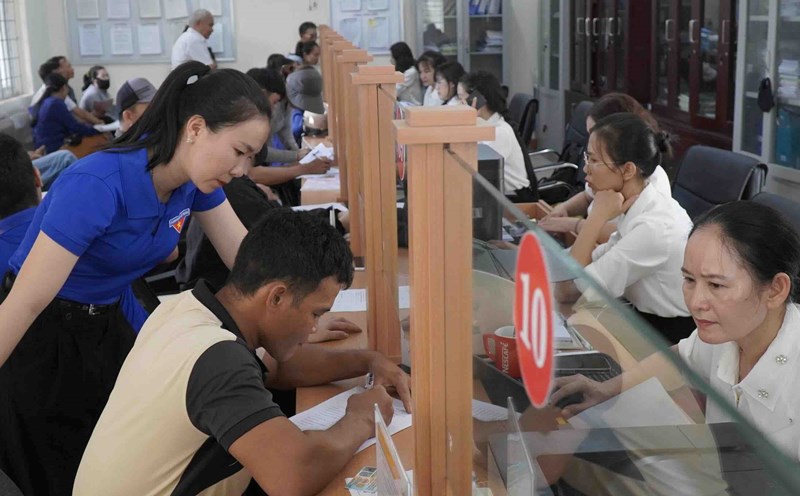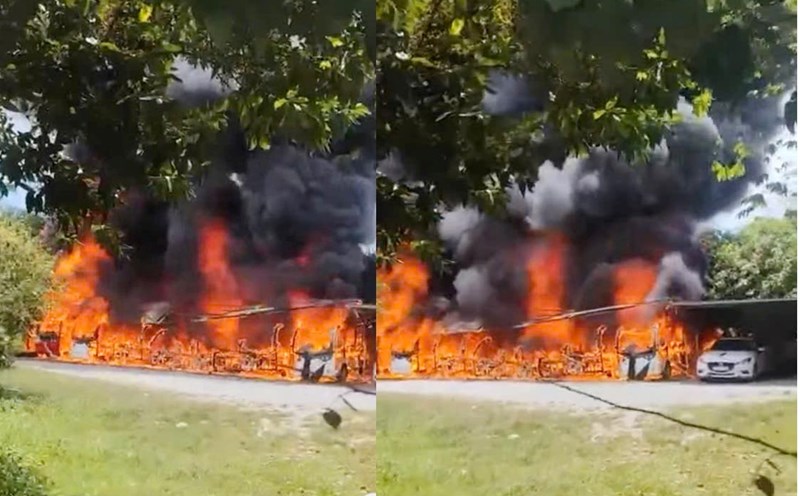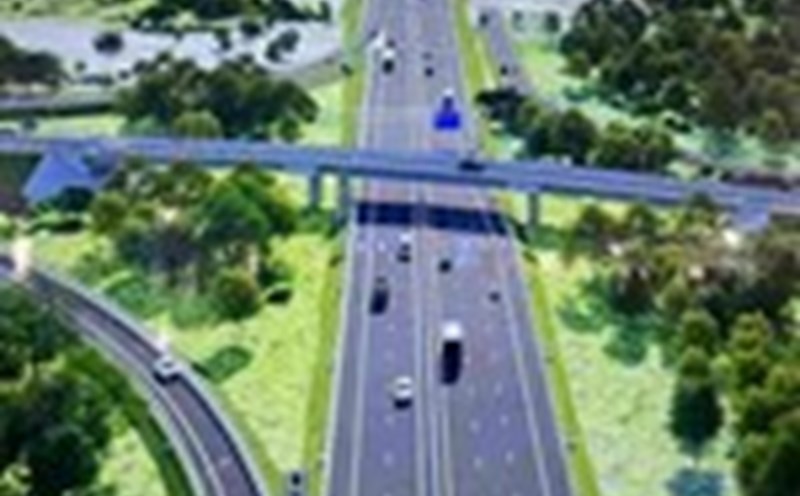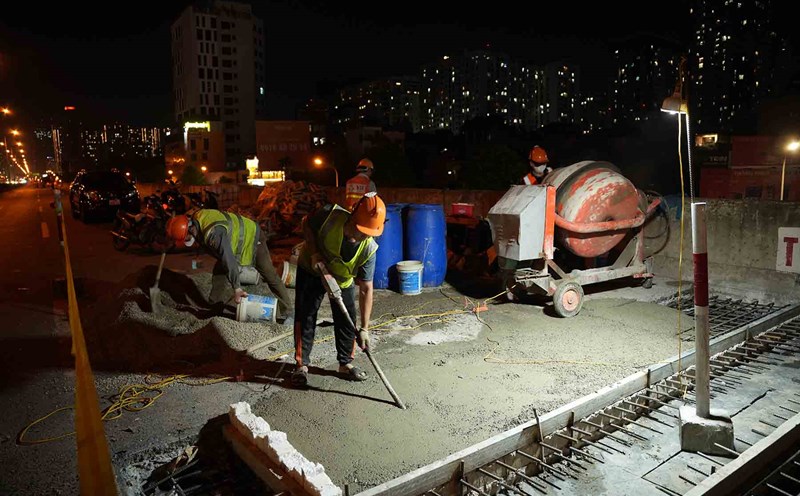digital transformation's mark
Recorded at the Long Phu Commune Public Administration Service Center (Can Tho City), people came to do procedures quite a lot but there was no longer much crowding and waiting. Instead, there is order and professionalism in receiving and processing documents. All of this is thanks to the promotion of digital transformation applications in handling administrative procedures.
Mr. Tran Van Bao, a resident of Long Phu commune (Can Tho city), shared: "I only come to confirm the documents. The staff guides enthusiastically, do it quickly, no need to wait too long". In particular, many people do not need to go directly to the Center to register for documents but just need to "transact one touch" right at home.
Ms. Nguyen Thi Huyen Tran, in Thoi An Hoi commune (Can Tho city), said: "Previously, I submitted documents manually, if there were errors, I had to go to the agency many times, which took a lot of time. Now, I can notarize, scan the documents and submit them online at home through the system. Today when I received the results, I found everything quick, the staff were very enthusiastic.
Having contacted to complete the land transfer procedures since early in the morning, Ms. Nguyen Thi Xuan, residing in Tuong 3B Hamlet, Vinh Thanh Commune (Ca Mau Province) happily said that she was given very specific instructions by the staff of the Public Administration Service Center of the commune on the procedures, especially the procedures for her family to reduce the tax payment level in the coming time according to regulations. She said that everything was smooth, the staff were dedicated. If it took many days, even a week before, now it is different.
Mr. Nguyen Thanh De - Director of Tam De One Member Co., Ltd., Tuong 2 Hamlet - Vinh Thanh Commune (Ca Mau Province), shared: Our enterprise is very excited about the two-level government model. Because, instead of having to go to the district or even the province to register for digital registration to do the procedure before, now it is done locally, saving time and costs and being resolved more quickly".
Mr. Ho Quoc Hung - Vice Chairman of the People's Committee, concurrently Director of the Long Phu Commune Public Administration Service Center (Can Tho City) - said that the Center's highlight is the application of digitalization in handling administrative procedures. Digitization helps the processing process become faster, ensuring regulations.
"At first, people were still confused. For procedures that cannot be accessed through the network environment, we send staff to directly access, support filling in forms, guiding data entry to the National Public Service Portal, ensuring progress and regulations - Mr. Hung shared more.
Can Tho synchronizes 2,113 administrative procedures
According to the Department of Science and Technology of Can Tho City, the Administrative Procedures Information System has been completed and deployed synchronously after the merger at 120 units, including the City Public Administration Service Center, 2 reception points in Vi Thanh and Phu Loi wards, 14 departments, branches, sectors and 103 communes and wards, with a total of 8,851 accounts created.
After connecting with the National Public Service Portal, up to now, 2,113 administrative procedures have been synchronized, while completing the connection with specialized systems such as the Ministry of Public Security's Interconnected Public Service Portal and land management software.
In Ca Mau, after a week of putting into operation the 2-level local government model, commune-level PVHCC centers in the province have received and processed a total of 15,740 administrative records; of which 1,660 records belong to the group of normal administrative procedures. There are up to 14,080 records related to public services such as certification, document confirmation, handling procedures related to the provincial level and internal administrative procedures between State agencies.
Vice Chairman of Ca Mau Provincial People's Committee Lam Van Bi commented that in addition to the achievements, there are still some difficulties and problems such as the power transmission and supply systems of some localities that have not met the demand; facilities of some units have not been guaranteed. Therefore, leaders of agencies, units and localities continue to review difficulties and problems arising during operations to promptly support and overcome them.











